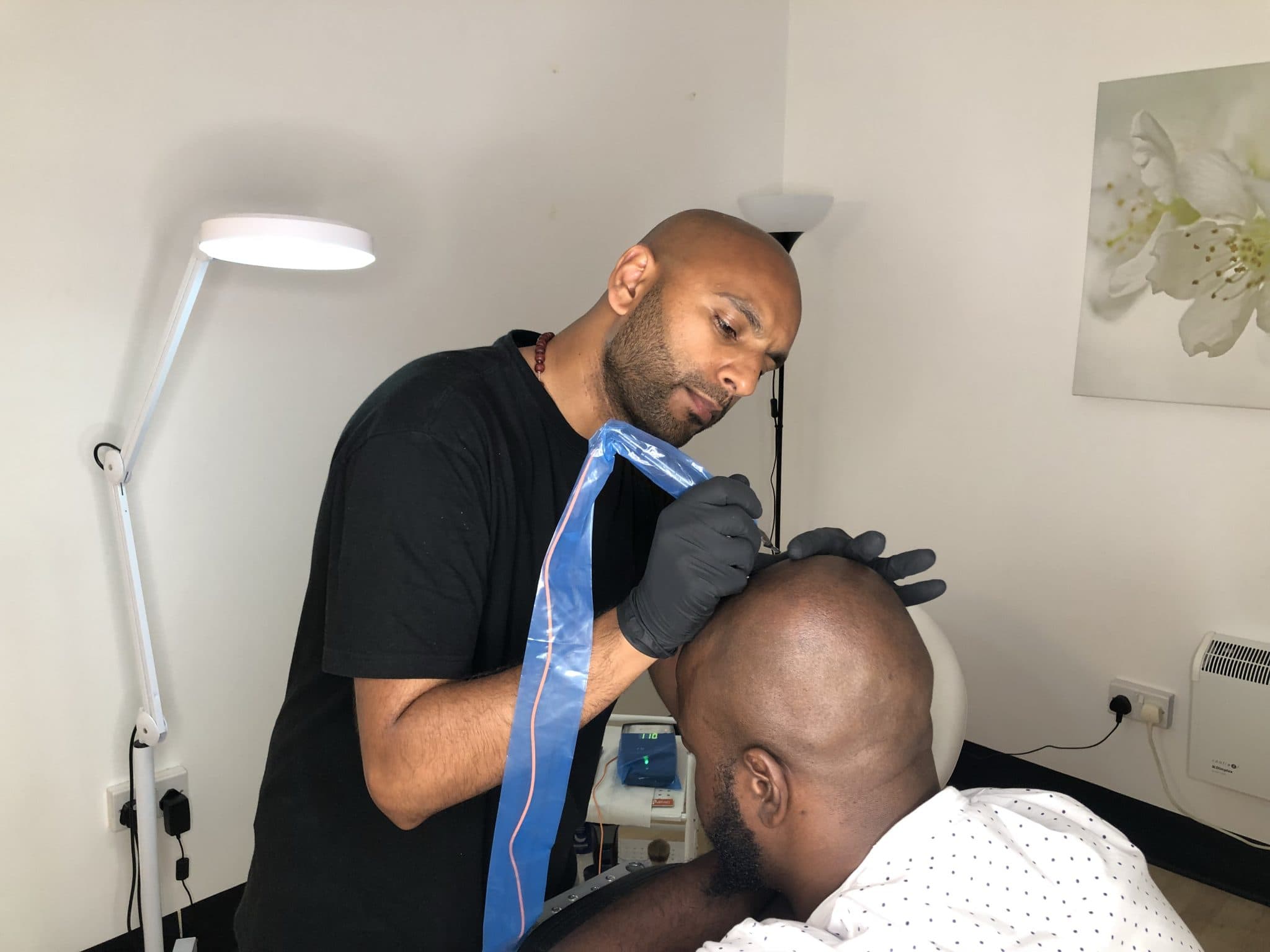
The desire to combat hair thinning and pattern baldness is pervasive, yet the commitment required for a surgical hair transplant—involving graft harvesting, lengthy downtime, and significant cost—is not a viable path for everyone. This reality has fueled a dramatic surge in the development and refinement of non-surgical alternatives designed to halt progression, stimulate regrowth, or effectively conceal loss without the need for an operating room. These modern modalities offer a compelling spectrum of options, ranging from pharmaceutical intervention and cutting-edge light therapy to biologically driven treatments and sophisticated cosmetic camouflage. Moving beyond the often-misleading claims of quick fixes, a critical examination reveals that non-surgical treatments are not a replacement for surgery, but rather a vital, often complementary, strategy for a broad population. They are particularly effective for individuals in the early stages of hair loss, those seeking to maximize the density of existing hair, or those whose medical profile makes them unsuitable for surgery. Understanding the mechanism of action for each of these diverse approaches is the key to creating a truly personalized, multi-modal hair restoration strategy.
The Commitment Required for a Surgical Hair Transplant Is Not a Viable Path for Everyone
For many individuals experiencing the gradual onset of Androgenetic Alopecia (pattern baldness), the primary goal is stabilization and the densification of the existing follicular units. The commitment required for a surgical hair transplant is not a viable path for everyone due to factors like cost, the need for a sufficient donor area, or simply an aversion to invasive procedures. This gap in treatment need is precisely where medical and non-surgical therapies shine, offering clinically proven methods to intervene at the biological level. The cornerstone of pharmaceutical treatment involves two specific agents: Minoxidil and Finasteride. Minoxidil (topical) works as a peripheral vasodilator, extending the hair follicle’s growth phase (anagen) and increasing follicular size. Finasteride (oral, often prescribed for men) targets the hormonal root cause by inhibiting the conversion of testosterone to Dihydrotestosterone (DHT), the primary hormone responsible for shrinking genetically susceptible follicles.
Finasteride Targets the Hormonal Root Cause by Inhibiting the Conversion
The critical distinction between the two pharmaceutical pillars lies in their mechanism. While Minoxidil is a growth promoter, Finasteride targets the hormonal root cause by inhibiting the conversion of testosterone into the more potent DHT. In men with genetic predisposition, DHT binds to receptors on scalp follicles, initiating the process of follicular miniaturization—the gradual shrinking of the hair shaft until it ceases production. By blocking the 5-alpha-reductase enzyme that facilitates this conversion, Finasteride reduces systemic DHT levels, slowing or halting the miniaturization process and, in some cases, partially reversing it by allowing some follicles to return to the active growth phase. It is considered the most effective non-surgical treatment for hair loss stabilization in men, though its use requires a careful discussion of potential side effects and is often used in conjunction with other therapies.
The Application of Low-Level Laser Therapy Stimulates Cellular Activity
Moving beyond pharmaceuticals, technology offers a non-chemical means of stimulating the scalp. The application of Low-Level Laser Therapy (LLLT) stimulates cellular activity within the hair follicle. LLLT devices, which deliver light in the red to near-infrared spectrum (often via caps, combs, or hoods), work through a process called photobiomodulation. The specific light wavelengths are absorbed by the mitochondria (the powerhouses of the cells) within the hair follicles. This absorption enhances cellular respiration and energy production (ATP synthesis), reduces inflammatory markers in the scalp, and improves local blood flow. The net biological result is an increase in the duration of the anagen phase, promoting thicker hair shafts and a higher density of actively growing hairs. LLLT is a safe, easy-to-use, at-home treatment that complements pharmaceutical or procedural approaches without systemic side effects.
Platelet-Rich Plasma Therapy Delivers a High Concentration of Growth Factors
The field of regenerative medicine has provided a potent, biologically driven alternative that leverages the body’s innate healing mechanisms. Platelet-Rich Plasma (PRP) therapy delivers a high concentration of growth factors directly into the scalp. PRP is derived from the patient’s own blood, which is drawn and then centrifuged to concentrate the platelets. When these concentrated platelets are injected into the dermal layer of the scalp, they release a host of potent growth factors (such as PDGF, VEGF, and EGF). These factors signal surrounding cells to enhance tissue repair, stimulate dormant or miniaturizing follicles, and promote neovascularization (new blood vessel growth), thereby improving the nutrient supply to the existing hair structures. PRP is typically performed in a series of sessions and is valued for being autologous (using the patient’s own blood), minimizing the risk of allergic reaction.
The Focus Is on Increasing the Quality and Density of Existing Hair
A crucial point of clarity for patients is understanding the specific limitations of non-surgical treatments compared to surgery. The focus is on increasing the quality and density of existing hair and preventing further loss, rather than covering areas of complete, long-standing baldness. Non-surgical therapies cannot create new hair follicles where none exist—that remains the exclusive domain of hair transplantation. Instead, they operate by rescuing miniaturized, vellus-like hairs, thickening the shafts of existing hairs, and stabilizing the hair loss process. For patients with diffuse thinning or early recession, this densification effect can be highly significant and aesthetically satisfying, often rendering the need for surgery unnecessary until much later, if at all.
Microneedling Creates Micro-Injuries to Induce Collagen and Angiogenesis
Another promising non-invasive technique involves mechanically stimulating the scalp. Microneedling creates micro-injuries to induce collagen and angiogenesis (new blood vessel formation) in the treatment area. By using a device with fine needles to cause controlled, superficial trauma, microneedling triggers a wound-healing cascade that releases local growth factors. When combined with topical treatments like Minoxidil, microneedling significantly enhances the absorption of the drug into the dermis, where the hair follicle stem cells reside, thereby boosting the therapeutic effect. Furthermore, the induced micro-trauma itself is thought to stimulate dormant follicular stem cells and improve the overall microcirculation necessary for healthy hair growth, making it a valuable adjunct therapy, particularly for those non-responsive to topical medications alone.
Scalp Micropigmentation Provides an Exceptionally Realistic Appearance of Density
For individuals with advanced hair loss who are seeking a permanent cosmetic solution without the biological commitment of surgical or medical treatments, the non-invasive option of Scalp Micropigmentation (SMP) offers a compelling route. Scalp Micropigmentation provides an exceptionally realistic appearance of density by replicating the look of shaven hair follicles. SMP is essentially a highly specialized form of tattooing where tiny, pigment deposits are meticulously placed within the scalp’s epidermal layer to mimic the appearance of a freshly buzzed haircut or to add density to thinning areas beneath longer hair. Because SMP is a form of cosmetic camouflage, it requires no healing or biological response and offers an immediate, visually transformative result for both men and women across all stages of hair loss.
The Best Outcomes Result from a Combined, Layered Strategy
The most effective approach to non-surgical hair restoration is rarely a single pill or procedure. The best outcomes result from a combined, layered strategy that simultaneously attacks the problem from multiple angles—hormonal, cellular, and nutritional. A typical, highly effective regimen might involve using oral Finasteride to block DHT, topical Minoxidil to promote growth, LLLT to stimulate cells, and periodic PRP sessions to deliver concentrated growth factors. This multi-modal approach creates synergy, where each treatment enhances the effect of the others, maximizing the patient’s genetic potential for hair growth and stabilization. This comprehensive, integrated strategy is key to achieving a level of density that a singular therapy could not reach.
Customized Nutritional and Supplement Support Is Often Integrated
Recognizing that hair health is a window into systemic health, comprehensive non-surgical plans often address internal factors. Customized nutritional and supplement support is often integrated into a patient’s treatment regimen. Hair production is one of the most metabolically demanding processes in the body, requiring a steady supply of specific micronutrients. Addressing common deficiencies in Vitamin D, Iron (ferritin), and Biotin can be critical, as suboptimal levels of these nutrients are known to contribute to excessive shedding (telogen effluvium) or poor hair quality. Furthermore, the role of specific amino acids and marine protein complexes is being explored to provide the essential building blocks for the hair shaft, reinforcing the internal environment necessary for successful growth.
Success Is Defined by Stabilization and Improvement in Hair Caliber
The metric for evaluating success in non-surgical restoration is distinct from that of surgery. Success is defined by stabilization and improvement in hair caliber, rather than by total hairline reconstruction. A patient who halts the progressive hair loss experienced over the last five years, thickens their existing shafts, and increases visible density has achieved a profound success, even if no new grafts were placed. Non-surgical options require consistent, long-term adherence and a realistic expectation that the goal is perpetual maintenance and improvement over time. This patient-centered definition of success is crucial for satisfaction and adherence, recognizing the immense value of keeping the hair a person currently possesses.
